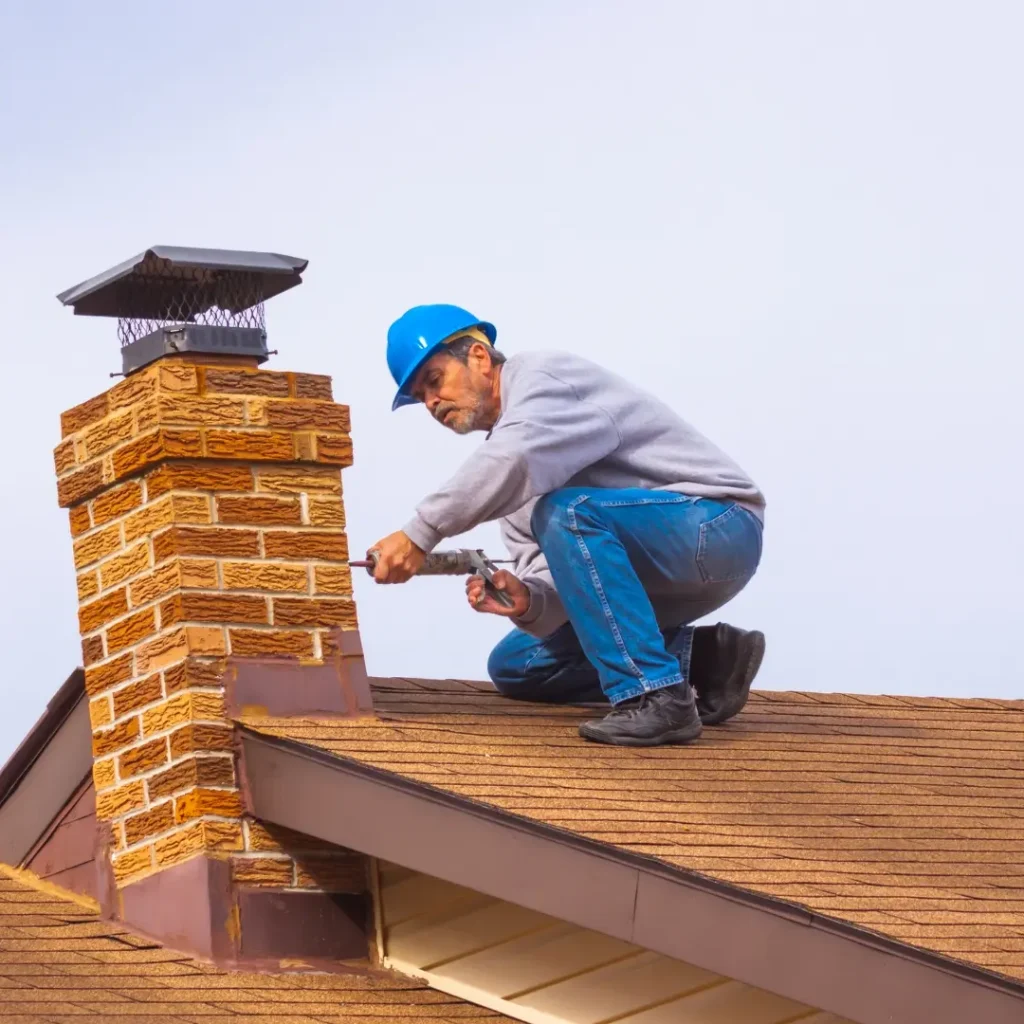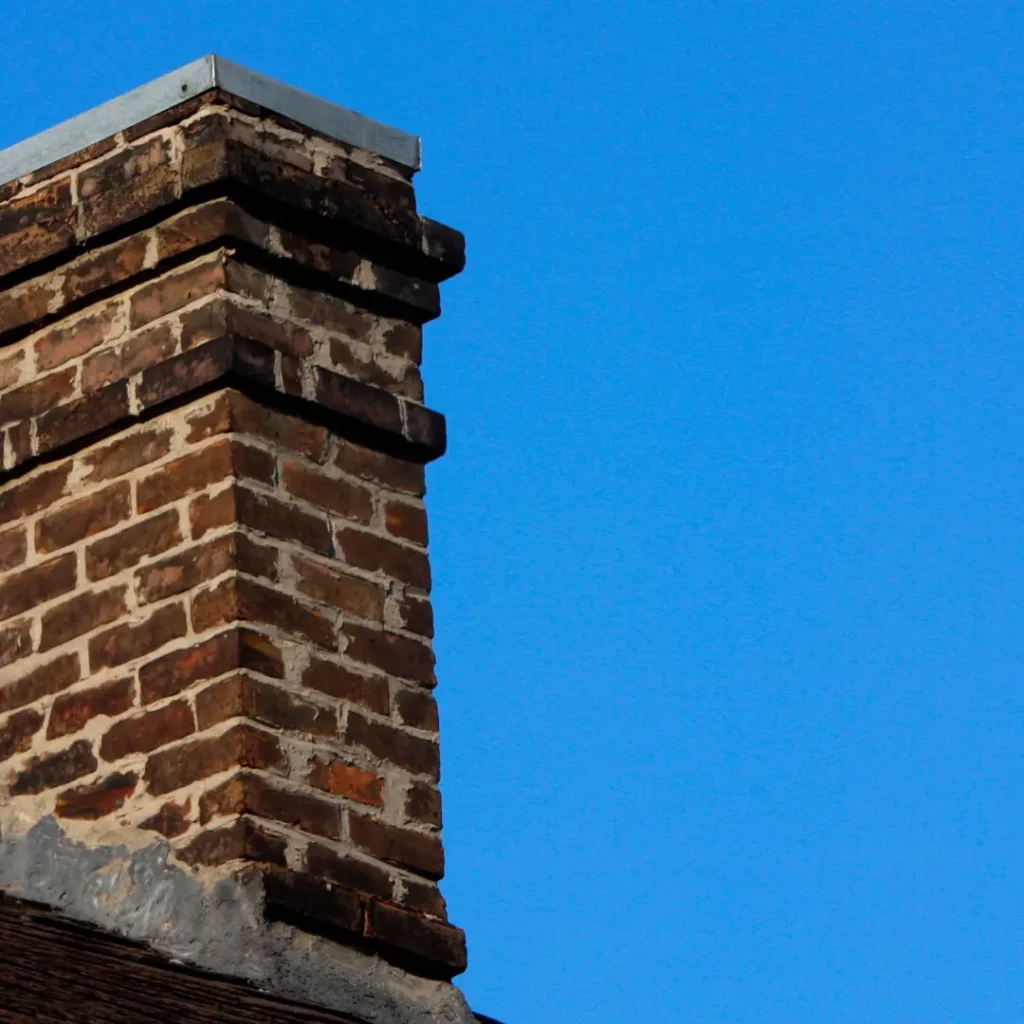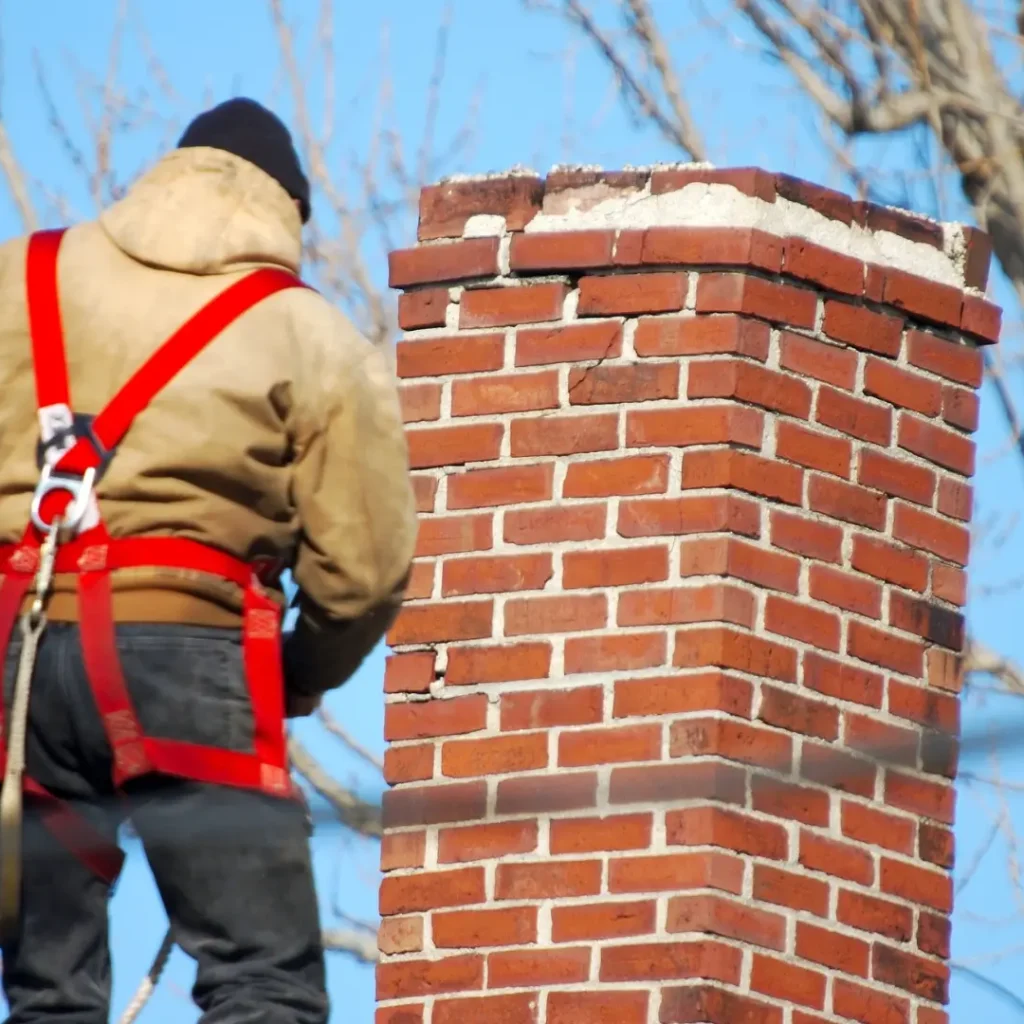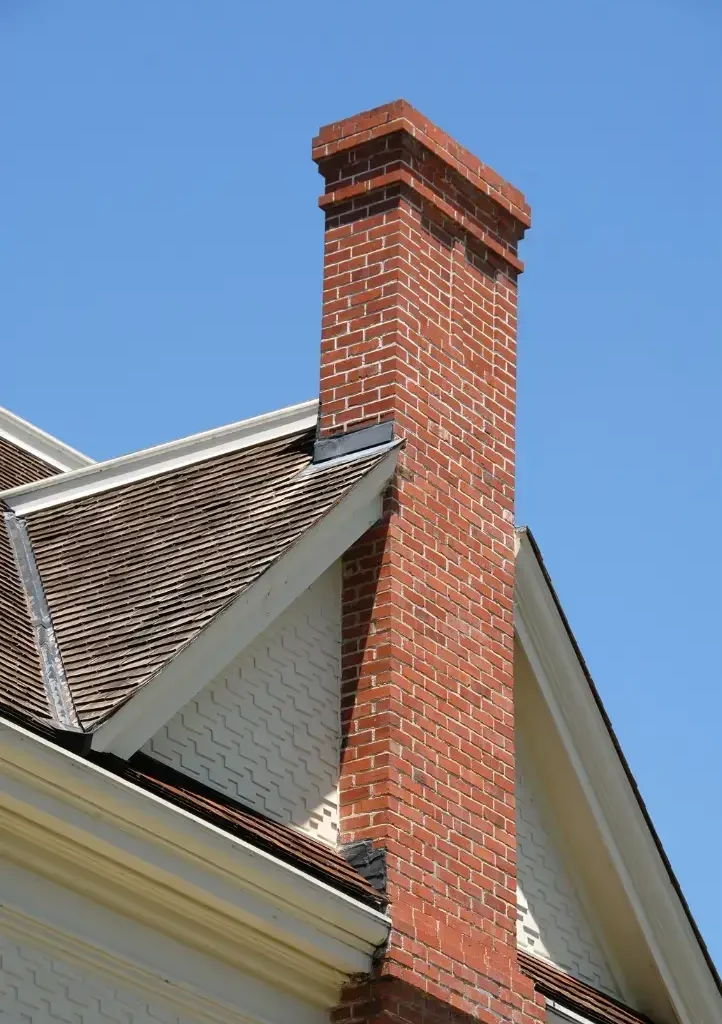Homeowner's Guide to Chimney Repointing | Tips from AX Masonry
Your chimney is important for keeping your home warm and safe. However, time, weather, vegetation, and the elements can wear it down and cause serious problems for your home.
Chimney repointing is a key maintenance job that keeps your brick chimney in tip-top shape and helps your chimney work well for many more years.
Whether you have owned a home for a long time or are new to chimney care, this guide will help you understand chimney repointing. Plus, we’ll help you decide whether this is a job you can DIY or if you need to call in the professionals.
Why trust us? A&X Masonry was founded in 2009 and since then we’ve worked on countless chimneys. Our craftsmen have decades of experience repairing brick, stone, stucco, and other masonry surfaces.
What Is Chimney Repointing?
Chimney repointing is about fixing the mortar joints that hold your chimney’s bricks or stones together. Over time, things like rain, snow, and extreme temperatures can wear down the mortar. This can lead to cracks, crumbling, or even gaps in the mortar, which can threaten the structural integrity of your entire chimney.
Repointing means taking out the damaged mortar and putting in new mortar. This creates a fresh, water-tight seal.
It’s a lot of work, but it’s a more affordable option compared to complete chimney rebuilding, as long as the damage is only to the mortar joints. If the damage goes deeper and affects the bricks, then a bigger chimney rebuilding project may be needed.

The Importance of Chimney Maintenance
Regular chimney maintenance is very important. Chimney sweeps can help with this maintenance by removing creosote buildup and other debris that can cause a fire.
However, maintaining your chimney is not just about cleaning the flue. You also need to check the outside of the chimney stack to make sure it stays in good condition.
This is where chimney repointing is useful. Fixing damaged mortar joints early stops water from getting in. If water seeps into cracks, it can freeze and expand and cause further damage to the mortar and bricks. This can eventually weaken the entire chimney are allow moisture to seep in and cause water damage in your home.
By investing in chimney repointing before there are major problems, you can protect your property and help your chimney last longer.

Identifying the Need for Repointing
Recognizing the signs of a damaged chimney is important.
- One clear sign is damaged mortar joints. Cracked, crumbling, or missing mortar means you need to repoint. Check the whole chimney carefully. Pay special attention to areas where the chimney meets the roofline. These spots are prone to water problems if the mortar is damaged.
- Another sign is visible stains on walls near the chimney. These stains are usually white or yellow. They happen when water seeps through damaged mortar and carries minerals with it. These stains are signs of a serious problem and you should get a pro to inspect your chimney bricks right away.
TIP – Plan on getting your chimney swept at least once per year (maybe more depending on the type of fuel you’re burning). While sweeping your chimney, the sweep can inspect the brickwork to check the condition of the mortar joints.
Identifying mortar joint problems and getting them repointed sooner rather than later helps you avoid bigger (and more expensive) damage later.
The Repointing Process Explained
Chimney repointing is a relatively simple process that replaces old, crumbling mortar with new mortar to make a strong bond between the bricks or stones.
- First, you need to take out the damaged mortar to a certain depth. This leaves space for the new mortar.
- After removing the old mortar, you prepare the joints and apply fresh mortar.
- Then, the new mortar is shaped and finished to match the old joints.
If you would like to try repointing a small section of brickwork on your own chimney, here are the basic steps.
IMPORTANT! – Working on roofs around chimneys is dangerous. Always use appropriate fall protection measures and safety gear. Removing old mortar releases dangerous silica dust, so be sure to use appropriate face masks or respirators. Although a relatively simple process, repointing chimneys is a high-risk activity, which is why many homeowners choose to call in professional masons.

If you’re in the Dallas, Fort Worth, Texas area, give us a call at A&X Masonry to get a free estimate on your chimney repair. Or simply fill out the form on this page and we’ll be in touch shortly.
Step-by-Step Guide to Repointing Your Chimney
While repointing may seem simple, it needs skill and care to get a long-lasting repair. Here are the main steps to follow:
Step 1: Remove Damaged Mortar:
Start by taking out the damaged mortar from the chimney. You can use a chisel and hammer or an angle grinder with a masonry blade. Try to create a clean and firm surface for the new mortar. Remove the old mortar about ½ inch – 1 inch deep or until you find solid and undamaged mortar.
Step 2: Prepare Joints:
After getting rid of the old mortar, clean the joints using a wire brush and a shop vacuum to catch any dust or loose bits.
Wet the joints with water. This helps stop the new mortar from drying out too fast.
Step 3: Apply Mortar:
Mix the new mortar according to the manufacturer’s instructions.
Carefully add the new chimney mortar to the joints. Make sure it covers them well and seals tightly.
Step 4: Finish the Mortar:
Once the mortar is partly set, use a pointing tool (also called a brick jointer) to shape the joint into a concave or V-shape. This provides a more weatherproof seal and makes the chimney look better.
Tools and Materials Needed for a Successful Repoint
Having the right tools and materials is very important for a good chimney repointing project. Here’s what you need:
Safety Gear: Wear safety glasses, gloves, and a dust mask to protect yourself from debris and dust.
Mortar Removal Tools: Use cold chisels, a hammer, a bolster chisel, and a plugging chisel to take out damaged mortar. You can also use an angle grinder with a masonry blade to work faster.
Mortar Mixing and Application Tools: You need a mixing tub, a mason’s trowel, a pointing trowel, a hawk (mortar board), and a bucket for mixing and putting on the new mortar.
Tuckpointing Tools: If you are tuckpointing, have a tuckpointing tool ready to shape the joints the way you want.
Choose a mortar that matches the current mortar in your chimney. Picking the wrong mortar can cause premature deterioration and harm the structural integrity of your repair.
Note: Getting the right mortar to match your existing mortar is one of the most challenging parts of chimney brick repointing. Old mortar is mostly a mixture of lime and sand. Most mortar used in the last 100 years also includes portland cement. The mortar recipe affects the overall color and properties of the mortar (soft, hard, etc.). You want to get mortar that’s as close to your existing mortar as possible.
That’s another reason to hire professional mortar-matching experts like A&X Masonry.
DIY vs. Professional Chimney Brick Repointing
Many homeowners think about doing chimney repointing as a DIY project to save money. It may seem easy, but it includes working high up with heavy and risky tools. You need special skills and knowledge to do the job safely and well. Using the wrong mortar can cause water to get in and lead to further damage and this can end up costing you more later.
Deciding between DIY or hiring a pro depends on several things, such as your own experience, how comfortable you feel at heights, and how tricky the project is.

The DIY Approach: Pros and Cons
Choosing to do your own chimney repointing can save you money. This is especially true if you know a bit about masonry. Repairing your chimney yourself gives you control over when the work gets done, and not to mention, doing your own projects can be rewarding.
But, it’s important to remember that DIY repointing has some risks.
Safety is a key point to think about. Working on a chimney means dealing with heights, and you need to take safety steps seriously.
Before you start any DIY chimney repair, it’s a good idea to check out resources like the Chimney Safety Institute of America (CSIA). They provide helpful safety rules and tips.
Also, if you don’t know enough about the types of mortar, how to mix it right, or how to apply it properly, your repair could not turn out how you want. Not only could it look ugly, but it won’t up over time.
If you have any doubts at all, it’s best to get a professional to help. This choice protects your investment and keep your chimney safe.
When to Call in the Professionals
There are times when you should definitely call in experts. If your chimney is large, with an unusual shape, suffering from heavy damage, or you don’t feel safe working high up, getting professional chimney repair is the smart choice.
Expert chimney masons have the skills, experience, and tools to take care of tough jobs easily. They can check the damage carefully and suggest the best repair method, whether it’s repointing or rebuilding.
Plus, good masonry repair contractors usually guarantee their work. This means you can relax knowing the repairs to such a critical piece of your home will be done properly.
If you’re in the Dallas, Fort Worth, Texas area, give us a call at A&X Masonry to get a free estimate on your chimney repair. Or simply fill out the form on this page and we’ll be in touch shortly.
Chimney Repointing Cost - How Much Will You Pay?
Chimney repointing costs can vary depending on factors like the size of the chimney, extent of damage, size, and location.
On average, homeowners can expect to pay anywhere from $500 to $3,000 for chimney repointing.
Remember: It’s always a good idea to get multiple quotes from reputable contractors and ensure that the cost includes materials, labor, and any necessary permits.
Don’t Put Off Repointing
In short, chimney repointing is important for keeping your home safe and strong. By knowing the process and the signs that show you need repointing, you can decide if you want to do it yourself or hire a professional.
Taking care of your chimney regularly and repointing before damage gets too bad can help you avoid high repair costs later on.
If you’re not sure about your chimney’s state or need expert help, feel free to contact us if you’re in the Dallas, TX area. Our team at A&X Masonry is ready to help.
Chimney Repointing FAQs
What is chimney repointing and why is it important?
Chimney repointing is the process of repairing the mortar joints between bricks on a chimney. It’s important because deteriorating mortar can lead to water leaks, structural damage, and chimney instability. Repointing ensures the chimney remains structurally sound and prevents further damage to your home.
How often should chimney mortar repointing be done?
The need for chimney repointing varies based on a few things. This includes the age of the chimney, the materials it is made from, and the weather in the area. As a simple rule, you should check your chimney every year. Look for any signs of damage. If you see any, think about repointing it. Keeping the mortar in good condition is important. This helps prevent further damage to the entire chimney structure caused by seasonal weather.
Can I repoint my chimney in winter?
It’s usually not a good idea to repoint masonry chimneys in the winter. The cold can make the mortar cure poorly. This can weaken the repair. Additionally, water damage is more likely when it’s cold, which can slow down the repointing process. Remember, repointing is more than just a cosmetic procedure for the exterior masonry. It’s better to schedule chimney repointing during milder seasonal weather.
What are the signs that my chimney needs repointing?
Several signs show that your chimney may need repointing. Look for crumbling, cracked, or missing mortar in the joints. This is especially important where the chimney stack meets the roofline. You should also watch for water stains, white stains called efflorescence, and loose or missing masonry. These signs can help you address issues early and avoid additional damage.
How much does it typically cost to repoint a chimney?
The price of chimney repointing can range from several hundred to several thousand dollars. It depends on things like how tall the chimney is, how easy it is to get to, how much damage there is, and the cost of labor in your area. Usually, repointing is a cheaper option than rebuilding a chimney. It’s a good idea to reach out to a skilled masonry repair contractor. They can give you a clear estimate based on what you need. Keeping your chimney’s structural integrity is a smart investment for your home’s safety and value.
Is chimney repointing covered by homeowners insurance?
Whether your homeowners insurance covers chimney repointing depends on your policy and what caused the damage. Damage from regular wear and tear is usually not covered. However, sudden issues like storms may be included. It’s a good idea to check your policy or talk to your insurance provider. They can help you understand the coverage for chimney repair and masonry repair related to chimney safety and structural damage.
What's the difference between repointing and tuckpointing?
Repointing and tuckpointing are both methods used to repair mortar joints in brickwork, but there is a key difference between the two. Repointing involves removing deteriorating mortar from the joints and replacing it with new mortar that matches the original color. On the other hand, tuckpointing is a more detailed process where a contrasting color of mortar is used to create the illusion of thin joints to improve the appearance of the brickwork. Both techniques can improve the aesthetics and structural integrity of your chimney.
